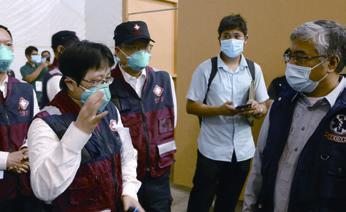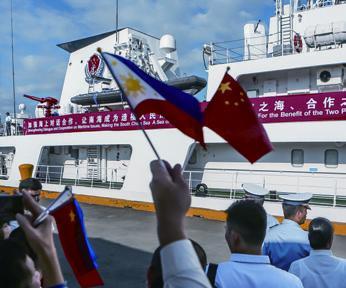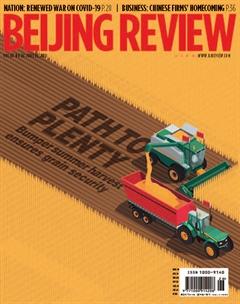Growing Association


This year marks the 45th anniversary of China-Philippines diplomatic relations. Huang Xilian, Chinese Ambassador to the Philippines, spoke to China Report ASEAN on the opportunities and cooperation potential between the two countries. Excerpts of the interview follow:
China Report ASEAN: The development of relations between China and the Philippines has reached a new stage. What is your opinion on its current state?
Huang Xilian: Chinese President Xi Jinping and Philippine President Rodrigo Duterte have placed considerable effort on improving bilateral relations in recent years, so the two countries have maintained peace and friendship, expanded economic and trade cooperation and increased people-to-people exchanges. These efforts have propelled the steady development of our friendship.
President Xi and President Duterte have met eight times since 2016, and high-level interactions between the two countries have been very frequent, giving powerful impetus to bilateral relations. China and the Philippines have properly solved disputes and maintained close cooperation in various fi elds including anti-terrorism, humanitarian relief, disaster mitigation and peacekeeping.
Meetings of the China-Philippines bilateral consultation mechanism on the South China Sea have also proceeded smoothly. China and the Philippines enjoy fruitful economic and trade cooperation. China has become the Philippines largest trading partner, largest source of imports, largest source of foreign investment and third largest export market. In 2019, bilateral trade volume exceeded $60 billion, an increase of 9.5 percent year on year. The same year, Chinese companies signed new contracts for projects in the Philippines worth $6.24 billion and achieved a total turnover of $2.76 billion.
The people-to-people bonds have become closer. China is now the second largest source of tourists for the Philippines. In 2019, the total number of Chinese tourist arrivals to the Philippines reached 1.74 million, a year-on-year increase of 38 percent. China aided construction of 14 schools in Mindanao which now provide more than 50 classrooms for over 2,000 local students. More than 30 pairs of sister provinces and cities have been established between China and the Philippines, and the two sides are arranging dispatch of English teachers from the Philippines to China and the establishment of cultural centers on each others side.
The momentum for regional cooperation has stayed strong. Since taking over the role as a country coordinator for China-ASEAN relations in August 2018, the Philippines has been actively promoting China-ASEAN cooperation and making it a model for international collaboration under the Belt and Road Initiative. China and ASEAN countries including the Philippines have actively stepped up consultations on the Code of Conduct in the South China Sea to maintain peace, strengthen friendship and boost cooperation in the region.
During his visit to the Philippines in late 2018, President Xi agreed with President Duterte to establish a China-Philippines relationship of comprehensive strategic cooperation and outlined the direction and new requirements for its future development. Since I became Chinese ambassador to the Philippines in December 2019, my top priorities have been to implement the consensus reached by the heads of the two countries and ensure steady and enduring development of our upgraded ties.
What are some of the potential fields of cooperation shared by the Belt and Road Initiative and the Philippine Governments Build, Build, Build development program?
Cooperation on infrastructure is the key link between the Belt and Road Initiative and the Build, Build, Build program. The Global Competitiveness Report 2019 published by the World Economic Forum ranked the Philippines 96th on infrastructure, citing its need to increase spending. At the same time, after over four decades of rapid development since its reform and opening up, China has created the worlds largest construction market and fostered a group of globally competitive construction companies. Cooperation on infrastructure between China and the Philippines has also received policy support. In November 2018, China and the Philippines signed a memorandum of understanding on cooperation within the framework of the Belt and Road Initiative, a move demonstrating both sidesdetermination to enhance cooperation on infrastructure. President Duterte attended both the first and second Belt and Road Forum for International Cooperation held in Beijing, showing his support for further cooperation in such areas.
Which sectors look most promising for economic and trade cooperation?
Under the strategic direction of the leaders of our two countries, tensions have eased, and bilateral relations have improved markedly, which has greatly boosted economic and trade cooperation.
The current bilateral trade volume between China and the Philippines has surged to more than 800 times what it was at the beginning of diplomatic relations.
China has been the largest export market for Philippine bananas since 2018. In 2019, coconuts from the Philippines were exported to China for the first time, and the two countries reached an agreement to bring Philippine avocados to China. According to the Department of Trade and Industry of the Philippines, Philippine companies reported orders worth around $300 million at the Second China International Import Expo in November 2019.
China and the Philippines have also made progress on investment cooperation. In July 2019, DITO, a joint venture between Eudenna Corp. and China Telecom, obtained its third license for operating telecommunications in the Philippines, and construction has progressed steadily. The Bases Conversion and Development Authority of the Philippines and China Gezhouba Group Co. Ltd. have entered negotiations on a series of cooperation projects in an industrial park in New Clark City. Panhua Group, a Chinese steel sheet company, has demonstrated interest in building factories in the Philippines.
Such projects could bring billions of dollars of investment and many good jobs to local people. The overall trend of Chinas contracted projects in the Philippines has been generally positive, and inter-governmental and commercial projects are all progressing well. I believe more projects will play a signifi cant role in facilitating bilateral economic and trade cooperation and people-to-people exchanges in the future.
What progress have China and the Philippines made on people-to-people exchanges? What kind of cooperation best enhances mutual understanding and trust between the two peoples?
In recent years, people-to-people exchanges have been gaining momentum thanks to support from both governments and communities. The wide range of fields and diverse types of exchanges between the two countries have continued to expand. For example, activities with various cultural themes highlighting Chinese and Philippine traditional cultures, Chinese movies and the Spring Festival have been organized to enhance cultural understanding. More than 1,000 Chinese students are studying in the Philippines, seeking degrees in management, medical care and education at prestigious universities. The Philippines now has five Confucius Institutes to provide Chinese language lessons for local people.
Next, the two countries will actively build new platforms for people-to-people exchanges based on traditional friendship. First, we will focus on increasing activities targeting a wider range of people and attracting greater local interest to consolidate foundation for cultural exchanges. Second, we will actively adapt to the development needs in the new era by strengthening cooperation in cultural industries and vigorously promote exchange and cooperation between think tanks, youths, media organizations and sports communities.
We will continue our efforts to pave a solid foundation for bilateral friendship to guarantee the long-term and stable progress of bilateral relations.

